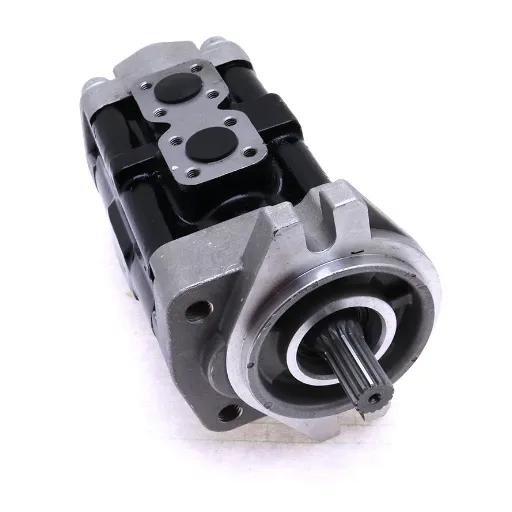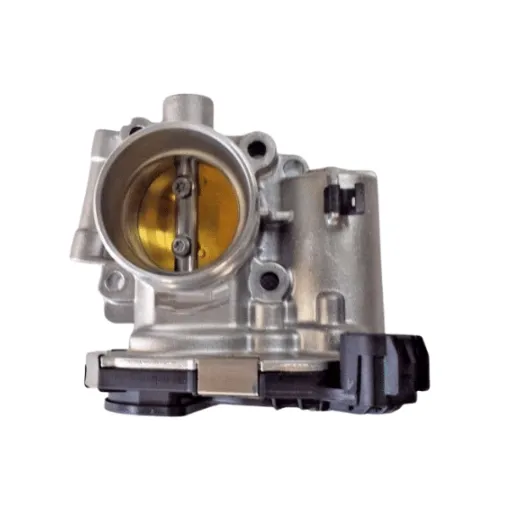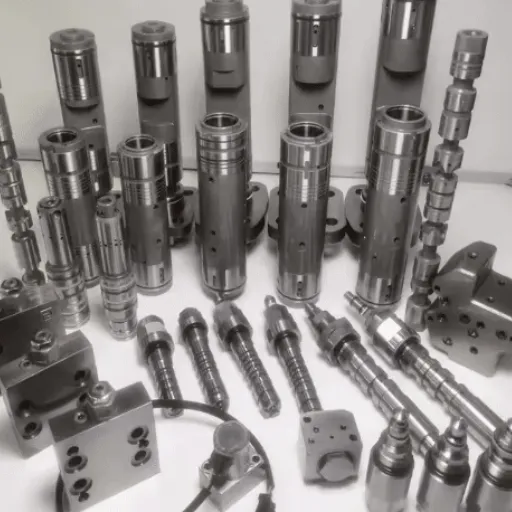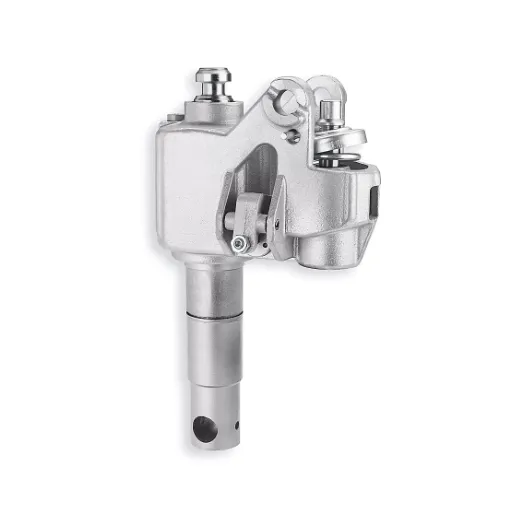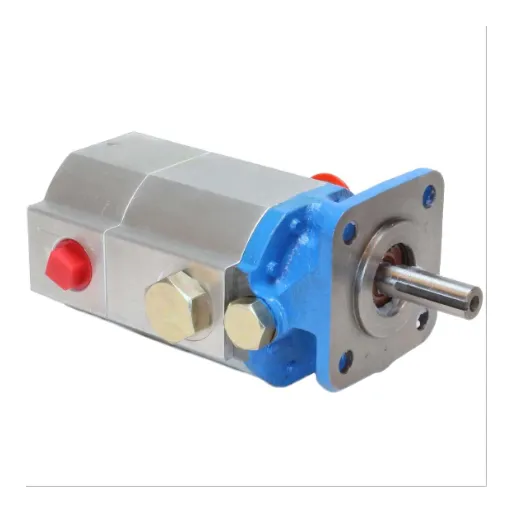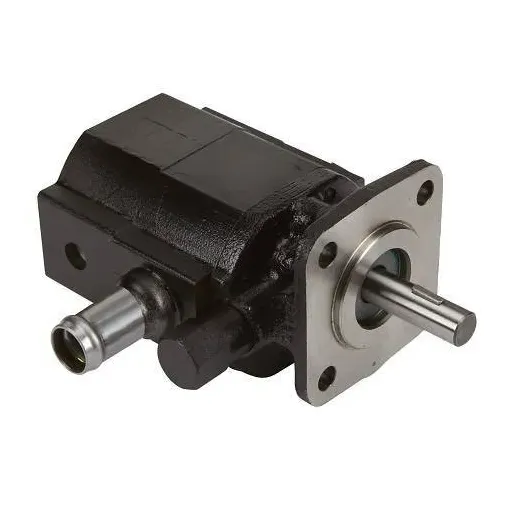Valves are critical components in fluid control systems, serving as the gateway to directing, regulating, and halting the flow of various media. Among the most commonly used types are solenoid valves and ball valves, each designed with unique functionalities and optimal applications. Choosing the right valve for a specific operation is a decision that can significantly impact system efficiency, reliability, and performance. This article will dissect the key differences between solenoid valves and ball valves, providing a detailed comparison to help you understand their construction, operation, and use cases. Whether you’re selecting a valve for industrial automation, water management, or HVAC systems, this guide will equip you with the essential technical knowledge to make an informed choice.
Understanding Solenoid Valves and Ball Valves

What is a Solenoid Valve?
A solenoid valve is an electromechanically operated instrument that controls the flow of liquids or gases in a system. In its functioning, an electric current energizes the solenoid, which in turn positions the valve to either open, close, or allow partial flow through. That ability to automate flow control can make solenoid valves a very important component in industrial and commercial systems where precise operation and reliability are necessary.
Generally, a solenoid valve consists of a coil, a plunger, and a valve body. Current flowing through the coil sets up a magnetic field that, during one half cycle, closes the valve while, during the other half cycle, the magnetic field produces a force on the plunger that opens the valve. The various types of solenoid valves are direct-acting, in which the flux of liquid or gas flow is controlled by the electromagnet acting directly on the valve mechanism, or pilot-actuated, in which the valve is manipulated by a pilot mechanism actuated by the electromagnetic force. The different sets of mechanisms find use for two-way, three-way, and even four-way operation, with one-way acting as on/off control, three-way for mixing, and four-way as a reversible way.
Solenoid valves find use in practically every other industry, courtesy of their fast response time, compact size, especially with respect to the size of manual valves, and general compatibility with automated systems. Among the most common uses are in water treatment systems, HVAC systems, pneumatic and hydraulic controls, and chemical processing. Having the ability to respond precisely while consuming very little power makes them very useful in a wide variety of applications that require reliable and efficient flow control.
How Does a Ball Valve Work?
The ball valve functions with the use of a spherical closure device, commonly referred to as the “ball,” which contains a bore or hole through its center. In the open position, the bore is coaxial with the flow path, thus allowing free movement of fluid or gas. Closing the valve involves a 90-degree rotation of the ball, thus placing the bore perpendicular to the passage and obstructing flow. Hence, the mere on-off operation of the valve is precisely controlled by such a simple mechanism.
Its defining attribute is the quarter-turn operation of the ball valve. One turns the handle or actuator ninety degrees to put the valve fully open or fully closed. The short time needed to operate the valve makes this design most suitable for applications requiring quick flow shutoff. Typically, the ball is made of materials like stainless steel and brass, which provide durability against wear, corrosion, and higher-pressure environments.
Ball valves, owing to their reliable operation, are used extensively in household and industrial applications. Unlike other types, they give a tight and leak-proof seal when closed, thus minimizing the risk of system failure or fluid loss. Further, ball valves are versatile and can work with many fluids-from water to oil, to gas, or chemicals-allowing their use in numerous sectors like plumbing, chemical, and power generation. Their simplicity, coupled with durability and near-perfect performance, has made ball valves one of the backbone components in many flow control systems.
Key Differences Between Solenoid Valves and Ball Valves
After all, ball valves and solenoid valves have very different operating mechanisms. Solenoid valves are electro-mechanical valves that act as electrically activated switches to allow or interrupt fluid flow by energizing or de-energizing a coil. They normally provide very fast and accurate actuation, excellent for automated systems that require numerous or rapid switching. In contrast, a ball valve typically implies flow regulation using a ball rotating against a seat, doing this either manually or automatically. They would rather be used when the application demands a solid, fully open, or fully closed position that provides very high sealing capability in a high-pressure environment.
In contrast to ball valves, solenoid valves are often designed for smaller pipe sizes and systems meant for lower flow rates. Given their small structure, they can fit in small spaces. Several applications include irrigation systems, medical devices, and HVAC systems. Ball valves, with their rugged build, are better suited to large pipe diameters and large flow volumes in industrial sectors like oil and gas or water treatment. Further, with fewer moving parts, ball valves experience less wear with time, while solenoid valves may see more frequent maintenance as they need electrical components and sealing.
Precision of control may be the next major delineating characteristic. Solenoid valves are capable of providing proportional control so that flow can be incrementally adjusted rather than switched simply between two extremes of open or closed. In systems requiring fine-tuning of flow, these valves are invaluable. Ball valves, on the other hand, are generally not meant for precise flow control-they provide sure shutoff and long-term durability in harsh environments. It is precisely these intrinsic distinctions that choose the correct valves, critical, depending on the operational and environmental demands of a particular system.
Applications of Solenoid Valves

Common Uses in Industries
Because of their dependability, precision, and automation qualities, solenoid valves find a great deal of use depending on the application. The major use of solenoid valves has been for fluid and gas controls in manufacturing plants and chemical-processing units. These valves precisely manage materials such as water, oil, steam, and inert gases. In addition, these solenoid valves find good applications in HVAC systems for refrigerant dispensing, temperature, and humidity control.
Another application for solenoid valves is in the automotive sector, especially in anti-lock braking systems (ABS), where these valves allow modulation of hydraulic pressure to prevent the wheels from locking during braking. Outside of mechanical usage, solenoid valves also find application in medical equipment such as ventilators and dialysis machines where high fluid control accuracy is required. In the foods and beverage operations, solenoid valves are used in automated dispensing machines, ensuring touch-free and hygienic ingredient flow.
The further versatility of solenoid valves lies in their nature-they can be linked with automation and smart technology, thus facilitating IoT-based systems for remote monitoring and control. Their compatibility with diverse environmental conditions, construction materials, and fluids makes them suitable candidates worth considering by industries where performance alongside reliability remains critical.
Examples of Solenoid Valves in Action
- Automotive Uses: Solenoid valve forms a part of any automotive system that includes fuel injection, emissions, and transmission systems. It measures fuel injection in advanced systems at milliseconds to ensure the engine is working in an optimum way while the emission is kept at the lowest.
- Medical Devices: Solenoid valves are critically used in medical devices such as ventilators and IV infusion pumps. Their precise control of gases and liquids, coupled with instant response time, provides for accurate dosing and flow regulation in life-saving equipment where utmost reliability is required.
- Industrial Automation: Solenoid valves are used in automated manufacturing systems to operate pneumatic actuators, control airflow, and manage liquid dispensing processes. They are integrated with programmable logic controllers (PLCs) so that the operations are synchronized on the production line, thereby making it more efficient and reducing downtime.
- Agricultural Irrigation Systems: The solenoid valve is an important component in modern irrigation schemes. The valves allow water to flow when signaled by the sensor or at set intervals, nurturing irrigation practices that save water, better crop yield, and require less manpower.
- HVAC Systems: Solenoid valves control the flow of refrigerants and temperature in HVAC systems. Their continuous working life, coupled with sturdiness under variable pressure conditions, ensures performance and energy-efficient operations at home and in the industries.
These examples describe the varied applications of solenoid valves, thus describing them as a key member in systems that require precise, efficient, and adaptable control over fluids and gases.
Advantages of Using Solenoid Valves
- Precise Control: Solenoids assure a smooth, precise control of flow in liquids and gases, something indispensable in settings requiring precision treatment, be it industrial processes or medical equipment. Just as precision is needed, it produces another need in process efficiency; many types can respond in as little as 10-50 milliseconds.
- Energy Efficient: The design itself makes solenoid valves highly energy-non-intensive. Especially so in the case of direct-acting and latching types of solenoid valves. They became less energy-consuming, with newer versions using up to 25% less energy than older ones, and therefore have become very cost-effective and environmentally friendly for an extended heavy-duty working life.
- Versatility: These solenoid valves come in various designs, materials, and configurations so that they can be used with any type of fluid, e.g., water, air, oil, corrosive chemicals, etc. This adaptability turns integration into a smooth job in so many systems across so many industries.
- Low Maintenance: Built to withstand rigorous use, solenoid valves contain very few moving parts, which translates into minimized volume of wear and tear during operation. They very well stand under pressure and variable temperature conditions, in turn requiring less frequent servicing, leading to a 30% reduction in maintenance cost compared to other types of valves.
- Compact Design: Light in weight and small in size, a solenoid valve can be installed in the tightest spaces or complicated systems, with a major factor favoring its adoption in aerospace, automotive, HVAC, and other such applications where critical space constraints exist.
Applications of Ball Valves

Industries Relying on Ball Valves
Ball valves are utilized across a broad range of industries due to their robust design, reliable sealing capabilities, and ease of operation. Key industries include:
- Oil and Gas: The oil and gas industries rely heavily on ball valves to regulate the flows of crude oil, natural gas, and refined products. High-pressure tolerance and temperature resistance enable them to be utilized in first and second-line applications. Their leak-proof qualities enhance safety and efficiency in hazardous environments.
- Chemical Processing: The chemical industry uses ball valves extensively for their ability to resist corrosive materials and work under aggressive media. Further advanced designs with special coatings or materials, e.g., PTFE or Hastelloy, make it possible for them to perform well even in harsh chemical environments.
- Water and Wastewater Treatment: Installation of these valves in water management systems guarantees smooth operations in the pipe networks dealing with drinking water, wastewater, and industrial effluents. Their durability and comparatively low maintenance needs make them an economically viable choice for long-term application.
- Pharmaceutical and Food Processing: Strict hygienic standards in pharmaceutical and food-processing plants require the deployment of ball valves. Stainless steel versions are used in these industries, particularly where contamination risks must be minimized.
- Power Generation: From thermal power plants to nuclear ones, steam and other fluids must be rigorously handled by ball valves. So much durability, coupled with their ability to withstand an extreme atmosphere, enhances these valves’ indispensability in the preservation of operational efficiency.
With all manner of operational demands satisfied, ball valves therefore serve as a great asset in numerous sectors with reliability and versatility available for both the usual and esoteric needs.
Real-World Scenarios for Ball Valve Implementation
Ball valves are extensively employed in industries that require precision along with reliability. For example, in the oil and gas sectors, they isolate and regulate the flow of crude oil and natural gas through pipelines. Their rugged construction is compatible with high pressures and corrosive substances, making them a safe and efficient tool to use.
Ball valves are employed in chemical and pharmaceutical applications in the transfer of volatile/hazardous liquids. Their capability to seal properly on a tight surface prevents leaks that otherwise could endanger the workers and jeopardize product purity during sensitive procedures. Advanced materials such as stainless steel or reinforced polymers are often employed for greater chemical resistance.
Water is distributed and flow rates are regulated by municipal systems, which employ ball valves to perform such a duty. Due to their simplicity, ball valves can operate efficiently even on large-scale systems, such as water treatment plants, where durability and lifetime performance are crucial requirements.
Ball valves are also used in HVAC (Heating, Ventilating, and Air Conditioning) applications to allow heating or cooling fluids to be precisely modulated. By maintaining appropriate pressures and reducing energy waste, they help enhance overall energy efficiency.
This wide range of applications further suggests the wide application scope of ball valves in numerous technical and industrial fields, thereby cementing them as the prime performance and safety-enhancing tools.
Pros and Cons of Ball Valves
Pros
- Efficient Sealing Mechanism: Ball valves provide seals against leakage in high-pressure situations. Their reliability makes them pertinent in situations requiring accurate flow control and system integrity.
- Durability and Longevity: Ball valves are generally produced with heavy materials such as stainless steel and brass, hence they give lasting service even in extreme temperature or pressure variations or corrosive environments. They need little maintenance.
- Rapid Operation: The opening and closing operations are completed within a quarter turn, which supports shut-off in an emergency or operational fluid control.
- Highly Versatile: The working media for a ball valve include liquids, gases, and slurries. Thus, ball valves find uses in industries such as oil and gas, chemical processing, and water distribution systems.
- Small Pressure Drop: Many ball valves, being full bore, provide a surface that is so smooth that virtually no pressure drop occurs, resulting in very efficient transfer of fluid.
Cons
- Not Useful in Fine Flow Regulation: Although these kinds of valves are excellent in on/off applications, they are not useful in throttling since partial opening can cause wear on the valves or can cause inaccurate flow rates.
- Size and Cost Limitations: The large-size ball valves, which are more often than not required for industrial-scale applications, are expensive and bulky in operation and hence become hard to handle and install.
- Wear and Tear: Various kinds of abrasive media or high velocity do erode the ball and seats here and there with increasing time, especially in those valves which are not meant for heavy-duty work.
- Thermal Expansion Risks: Thermal expansion occurring during some applications may cause ball valves to seize, so special designs are needed to counteract the effect.
By weighing these pros and cons, engineers can decide whether ball valves suit their particular operational requirements and promise optimum performance and system reliability.
Comparative Analysis: Solenoid Valve vs Ball Valve

Reliability and Maintenance Considerations
When weighed against ball valves for reliability and maintenance, it becomes paramount to weigh the specific demands of the application and the working environment. Solenoid valves mostly find use in systems where tight control demands are paramount, and they can be highly reliant on electrical components and magnetic coils to achieve their function. This dependence may translate into some vulnerability in an environment where power failures, moisture ingress, or ingress of particulates are common; the coil can burn out or cause the valve to stick. However, advancements in solenoid valve design have provided robust sealing, and the inclusion of protective coatings prevents corrosion and unwanted sticking of the moving parts, thus providing better long-term reliability.
Ball valves, on the other hand, being of simple mechanical structure, are highly durable and electrically failure-free. The rotational sealing system of these valves can provide good sealing and resistance to wear when working under high pressure. However, ball valves may suffer from seal deformation or wear with time and exposure to aggressive chemicals or extreme temperatures. Regular inspection and timely replacement of seals are crucial to retain their functionality.
From a perspective of maintenance, solenoid valves, in general, require more frequent maintenance, caused by the wearing of components like springs and seals. Additional labor time, disassembly, and cleaning may be involved as well. Ball valves require less maintenance and last longer, but may need interim cleaning to avoid clogging in cases where contaminant-laden fluids are involved.
Finally, the question of relative reliability and maintenance of solenoid and ball valves depends on the specific operational requirements, nature of fluids, and environmental conditions. Both valve types present advantages and shortcomings that must be considered well by engineers to assure the best performance and operational effectiveness over the long term.
Cost and Energy Efficiency Factors
Cost and energy considerations, especially in industrial and commercial applications, reveal a number of important things to consider. Ball valves are often more expensive initially because they are made to be very robust and to operate with a manual mechanism. However, these valves last longer and require less maintenance, thereby offsetting the upfront cost over a period of time. In contrast, solenoid valves are less costly initially but do tend to incur energy costs during use, as these valves often require continuous electrical input to maintain one state.
Energy efficiency is another important consideration in places where actuation must be continuous or very frequent. Solenoid valves use electricity during activation. Electrical consumption can prove to be substantial operational costs in large systems where solenoids might be applied widely. This can be remedied by energy-efficient solenoids such as latching solenoid valves that only need a brief electrical pulse to change states. Ball valves, however, consume no energy if manual, which is a strong advantage in settings sensitive to energy consumption. An automated ball valve might have its energy consumption from an electric or pneumatic actuator considered, depending on what type of actuation is applied and how often.
Engineers will consider these factors in light of application requirements and aim to achieve the most cost-effective and sustainable solution possible. Making use of data-driven tools and advanced design simulations can also assist in fine tuning such decisions to be in lockstep with operational objectives and long-term resource optimization.
Choosing the Right Valve for Your Needs
Choosing the proper valve requires a thorough understanding of the operational requirements and the environmental conditions in wherein the valve is to be installed. Hence, considerations include the nature of the fluid handled (whether liquid, gaseous, or mixed), temperature and pressure ranges, flow rates, and control precision needed. Chemical compatibility with the fluid must be observed to prevent the corrosion or degradation of materials that might impair performance or pose risks.
Valve selection must also factor in actuation requirements—whether manual, pneumatic, hydraulic, or electric—dependent on application dynamics and automation needed. Processes requiring fast or frequent cycling may, for example, consider electric or pneumatic actuators for superior control and reliability. Furthermore, the SELLER should ensure that all valves comply with industry standards such as ANSI, API, and ISO to ascertain and stipulate that the valves meet the benchmark necessary standards for operational and safety requirements.
In modern times, the optimization of sizing can be facilitated by tools such as flow simulation software, which can minimize the chances of cavitation or turbulence, thereby realizing the efficiency of the intended system. Furthermore, considering life-cycle costing against procurement, installation, maintenance, and energy consumption helps provide a framework for selecting the most cost-efficient means towards the layer of the end objective that the system intends to achieve.
Emerging Trends in Valve Technology

Innovations Affecting Solenoid and Ball Valves
These advancements are triggered primarily by the increasing need for precision, low energy utilization, and operational reliability. In the case of solenoid valves, innovations do include smart sensors and IoT connectivity. Based on these, real-time monitoring can be done on the valve performance, predicting maintenance while absorbing inordinate downtime into system operations. Besides, the introduction of low-power solenoid designs has greatly reduced energy consumption, especially in environments where the valve is in continuous operation or in applications in which many cycles are required.
Ball valves are trending toward using better materials and methods of production for improved service life and performance in systems where pressure and temperature are very high. Advancements in polymer science have brought about sealing materials that provide tighter shutoff, and hence, fewer chances of leakage even under corrosive environments. Automation is yet another focus area, where motorized ball valves endowed with highly advanced actuators enable exact flow control in the oil and gas, water treatment, and chemical processing industries.
In my opinion, such improvements stress the need for having valve technology fit into the wider needs of automation, efficiency, and sustainability in industrial systems. System reliability can be increased using such technological advancements, operational costs can be seen in reduced terms, and future challenges can be anticipated. This ensures that these technologies will continue to be the front runners when it comes to fluid control.
The Future of Flow Control Solutions
The trajectory of flow control solutions is defined by pivotal trends in technological innovation, digital integration, and environmental sustainability. Advanced manufacturing techniques such as additive manufacturing are able to achieve complex valve geometries for enhanced fluid-dynamic behavior and reduced pressure drops. These precision-engineered components are demanded by modern systems for increased efficiency and durability under high-pressure environments.
On the higher level, IoT-enabled systems integration and smart valves bring in a new technological domain of industrial flow management. This became indispensable in increasing operational uptime with real-time monitoring and predictive maintenance. The Industrial IoT (IIoT), by way of embedded sensors in flow controllers and valves, enables plant operators to collect data on flow rates, pressure levels, and temperature-multi-dimensional machinery and system performance visibility rarely ever seen before.
Environmental aspects lend much strength to the flow control domain as well, in knowing that it earnestly aims toward sustainability. By using optimized valve design concepts, energy-efficient actuators can assist in energy conservation and thus reduce pollutions from industrial processes, which tie strictly to the global front of net-zero emissions toward several economic sectors.
The future of flow control rests at the nexus of automation, eco-consciousness, and data integration. Investments and partnerships in RD and standardization must continue to ensure these technologies can adequately respond to the increasing complexities of both industrial and environmental issues.
Impact of Automation on Valve Selection
With its orbital motion, automation has profoundly affected valve selection, considering the implementation of advanced control systems and smart technologies; these systems are intended to be highly efficient and reliable. Automated valves are ideally suited for integration with IoT-enabled platforms that monitor conditions in real time. Such systems can record diagnostic data or perform predictive maintenance. This not only ensures superior process control but also reduces downtime and the cost of operations.
One such effect of automation is valve selection based on the truly accurate process requirements, with algorithms adjusting variables such as pressure, temperature, and flow rate. For example, condition-state actuators with smart sensors provide the capability to be dynamically responsive to keep the valve operating optimally when conditions change. These systems require extreme calibration and analytical methods finely tuned with data for a level of customization and control that manual or mechanical systems cannot presently match.
Similarly, automated valve networks promote safety and environmental protection by providing remote control and fail-safe measures. By collecting and evaluating continuous streams of data on equipment and performance, these systems can detect and announce imminent problems so that decisions are made proactively. This extensive and analytical approach provides compelling arguments for integrating automation into valve selection so as to better respond to the level of strictness imposed in both the regulatory and operational paradigms in contemporary industrial settings.
Frequently Asked Questions (FAQ)
Q: What is the primary function of a solenoid valve?
A: A solenoid valve works by using an electromagnet to create a magnetic field that opens or closes the valve, allowing or stopping the flow of fluid through a pipe. This mechanism is ideal for applications where precise control is needed.
Q: How does a ball valve operate compared to a solenoid valve?
A: Ball valves use a ball with a hole that rotates to either allow or block fluid flow. Unlike solenoid valves, which require power to operate, ball valves can be manually operated or can use motors to rotate a ball, making them versatile for various applications.
Q: What are the advantages of using a pneumatically actuated ball valve?
A: Pneumatically actuated ball valves utilize compressed air to operate, providing rapid opening and closing capabilities. This makes them suitable for systems where quick response times are essential, unlike solenoid valves that rely on electric power.
Q: In what scenarios would you choose an electric ball valve over a solenoid valve?
A: Electric ball valves are ideal for applications requiring modulating control, as they can maintain a specific position based on the control signal. If precise flow control is needed, an electric ball valve may be preferred over a solenoid valve.
Q: Can a ball valve be used as a shut-off valve?
A: Yes, ball valves are often used as shut-off valves due to their ability to provide a tight seal when closed. This makes them effective for opening and closing applications, similar to solenoid valves, but they do not require power to operate.
Q: What is a 3-way ball valve, and how does it compare to a solenoid valve?
A: A 3-way ball valve can direct flow between three different paths, making it versatile for control applications. In contrast, solenoid valves typically operate with two positions (open or closed), offering less flexibility in flow direction.
Q: How does the design of a ball valve impact its performance?
A: The ball valve design, including the materials used and the configuration of the internal ball, can significantly impact its performance, durability, and flow capacity. Unlike solenoid valves, which may have limited configurations, ball valves can be tailored for specific applications.
Q: Are solenoid valves or ball valves more reliable for long-term use?
A: Both solenoid valves and ball valves have their reliability factors. Ball valves tend to excel in long-term use as they don’t require power and have fewer moving parts that can wear out. Solenoid valves may require more maintenance due to their electrical components.
Q: When should I consider using a direct-acting solenoid valve?
A: Direct-acting solenoid valves are ideal for applications where immediate response is required, as they can function without needing a pilot valve. This makes them suitable for smaller flow rates and applications where quick actuation is critical.
Q: What are the key differences in energy consumption between solenoid valves and ball valves?
A: Solenoid valves require electrical power to operate, which can lead to higher energy consumption, especially in large systems. In contrast, ball valves can be operated manually or using a pneumatic system, which may not require constant power, making them more energy-efficient in certain applications.




